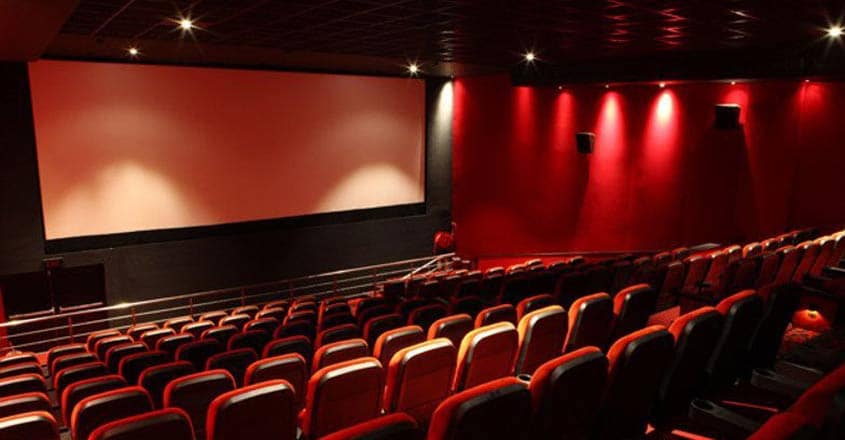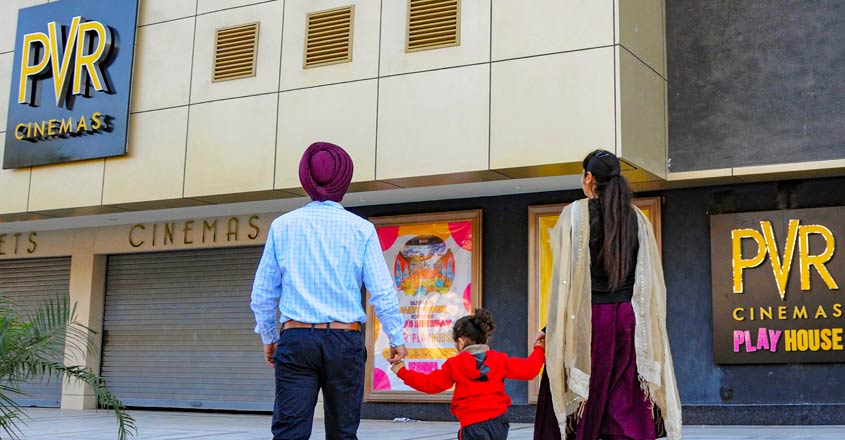Column | Online and theatre releases should co-exist in the movie ecosystem

Mail This Article
Amazon Prime announced that it has acquired exclusive global streaming rights to release seven upcoming Indian films in five different languages.
Shoojit Sircar's 'Gulabo Sitabo', Anu Menon's Vidya Balan- starrer biopic 'Shakuntala Devi', Tamil legal drama 'Ponmagal Vandhal', Keerthy Suresh-starrer 'Penguin', Jayasurya-Aditi Rao Hydari-starrer Malayalam romance 'Sufiyum Sujatayum', Kannada legal drama 'Law' and another Kannada film 'French Biryani' are part of their release line-up. We must remember that COVID-19 and the resultant lockdown had denied a majority of these films grand theatrical openings.
The news created a furore among distributors and exhibitors who protested against and issued veiled threats to the producers who decided to take the online route to release their films.
Their contention: mainstream films are meant to be released in theatres, and not on online platforms.
The CEO of the country’s largest theatre chain PVR remarked that theatrical release is the best way for audiences to experience the labour and creative genius of our film-makers.
Some of the distributors' bodies went on to the extent of saying that a work can be considered as film only when it is exhibited in theatres, all others shown exclusively on online platforms are 'serials' and 'videos'.
This argument is not new. We had heard the ‘analogue versus digital’ or ‘film versus video’ debate when the films went digital, first in cinematography and post production and then in exhibition.
Though pretty much all of the film industries worldwide have made the transition from traditional celluloid to digital, we still have film makers who decry shooting and doing post production work in digital. This is in spite of the fact that digital film-making and processing have undergone dramatic improvements over the last couple of decades.

Director Quentin Tarantino, for example, has been such a vocal proponent of shooting in films. His latest, 'Once Upon a Time in Hollywood', which was shot on widescreen celluloid (Kotak 35mm Anamorphic film), was hailed as 'dazzling' and 'brilliant.'
Amusingly enough, the auteur announced his retirement at the end of a keynote speech at a conference hosted by digital post production software major Adobe Inc.
After vouching for analogue technology for decades, veteran Adoor Gopalakrishnan turned to digital technology in his 12th feature film 'Pinneyum' in 2016.
Adoor later went gaga over how digital technology helped him reduce the duration and effort of filmmaking to a great extent and to let him focus on quality.
Another resistance
The next round of resistance came from theatres that resisted the digital projection of films because it involved upgrade cost and they thought that digital will dilute the old world charm of projecting a physical film print.
The other unstated reason was the curb satellite projection puts on the excessive liberty that the theatre owners take to “re-edit” the film on the go.

Film-makers were often at the receiving end because theatre owners used to arbitrarily trim portions of the film to reduce the overall duration and remove scenes that they thought weren’t necessary for the film.
Producers have voiced their support for the Over-The-Top (OTT) release model because it offers them oxygen to survive in these times of unprecedented crisis that has stalled the production and release of films.
On the other hand, the exhibitors argue that the producers should have waited for the theatres to reopen to release their films. They have threatened to boycott films of producers and actors whose films are released on OTT platforms.
World of possibilities
A major advantage of OTT releases is the possibility of a “world premiere” in its truest sense.
The major handicap of the existing release paradigm is that it limits the reach of a release to a strict geographic area.
In case of a south Indian film, the area is limited to that state along with a few screens in a couple of metros.

Amazon Prime, for example, claims to have presence in lakhs of cities in over 200 countries. In India, it boasts of its presence in 4,000 cities.
If you compare releasing a modest mainstream production in around 50 theatres and releasing the same film on an OTT platform such as Amazon Prime, the difference is not hard to notice.
Disruptive innovations always create short-term pain for some but they make the existing players to innovate rather than stay complacent maintaining their monopoly.
When Netflix was launched, the existing players did not see them as a major threat because Netflix was not releasing big films or new titles.
Moreover, the internet ecosystem worldwide was not fast enough to stream films in high definition to a large number of users.
Then it went on to disrupt the space by producing their own films, creating the largest repository of films in various genres and producing web series with compelling quality.
However, Netflix or its contemporaries have not yet eliminated theatres or reduced the primacy of theatres in movie releases.
Co-existence
In a previous column, I had argued why theatres are here to stay because OTT platforms are not yet mainstay.
Though the ‘OTT versus theatres’ argument and ‘analogue versus digital’ arguments have parallels, the former does not result in an elimination of existing players from the scene. There is space for co-existence for both in the industry.
It is true that a number of film-makers would cut their production cost and make their films viable for exclusive online releasing in the long term.

However, majority of films will still be releasing in theatres unless the economics of films undergo a sea change. We have often seen big films scrambling to get theatres and modest productions and independent films often losing out in the process.
A competition for first or exclusive exhibition rights between streaming and theatre distributors might ensure a level playing field.
In a historic development last year, a streaming service became the studio with the most number of nominations in the Academy awards.
Netflix nabbed 24 nominations, more than any other media company in the industry. Netflix’s achievement points to a shift in Academy's attitude toward streaming services. However, the Academy’s rules for eligibility require a film run for at least seven consecutive days at a commercial theatre in Los Angeles County. The film must also be shown at least three times a day, with at least one screening between the hours of 6pm and 10pm.
Impending rule change
Rules of some of the world’s top film awards will be changed in the coming days to remove the clauses related to theatre releasing altogether.
The award rules for the 93rd Oscars, for example, have been changed. The Academy, in a release announced that “until further notice, and for the 93rd Awards year only, films that had a previously planned theatrical release but are initially made available on a commercial streaming or VOD service may qualify in the best picture, general entry and speciality categories.” The day is not far when such an exception becomes a rule.
Film exhibitors have been facing competition from emerging players over the years.
Ranging from cable television to direct-to-home, on-demand and pay-per-view streaming, when they emerged, these players were first viewed as threat to theatres, but they eventually ended up co-existing in the film exhibition ecosystem as players with unique value proposition.
Except small budget and independent films, all other films will continue to be dependent on worldwide theatre releases to recover their production cost and earn a profit.
Once the pandemic threat blows over, the big releases will bring people back to the theatres and then the other films that are awaiting release will follow suit.
By then, the field would have expanded to accommodate all the participants who would have been left behind otherwise.
(Dress Circle is a weekly column on films. The author is a communication professional and film enthusiast. Read his past works here.)


